Many people have seen how noted artist Yan Sun portrays people in his paintings. However, they are curious about how the artist depicts himself. At Yan Sun Art Museum, visitors have the chance to view some of Yan Sun's "self-portraits."
Inspired by works of European masters such as Diego Velázquez’s “Las Meninas” and Francisco Goya’s "The Family of Charles IV,” Yan Sun has included himself in many paintings. These “self-portraits” are like Yan Sun's visual autobiography to represent some key moments of his life. However, Yan Sun's portraits are unlike traditional portraits in many ways.
In the background of "Voice in History," Yan Sun is depicted standing with Greek sculptures “A Nude Youth” and "Calf-bearer," as well as Chinese terracotta soldiers of Emperor Qinshihuang. The facial expression and gesture of the girl on the foreground represents human reaction to the uncertainty and challenges. According to Yan Sun, “An artist makes a long and difficult journey in a network made up of reality, dream, transience and eternity.”
In "Music Meditation," viewers may not initially notice the artist himself in the painting but come to find how the artist wisely painted himself in the composition. Yan Sun has painted himself in the reflection of folk-art frog’s mirror. Just like Yan Sun's other trompe l'oeil style paintings, "Music Meditation" has a dark wood panel background. It emphasizes the objects depicted, especially the ones that create the focal points of the paintings. The objects are very well defined and set off from the others. As in many of Yan Sun's paintings, peaceful meditative moment is extremely important in this painting.
In 1990s, Yan Sun had created a series of paintings characterized by their black backgrounds. In these paintings, some seemingly unassociated images appeared in one space, and they have composed of a bewildered, fantastic, and helpless loneliness. "A Journey in Space" is among the most manifesting examples. Yan Sun’s self-portrait appears in a mirror set off by a piece of historic mural.
A piece of news in “The Daily Jeffersonian” newspaper about Yan Sun’s painting, “John Glenn – Nation Hero” appears in painting “Past and Present.” Astronaut and U.S. Senator John Glenn is an alumnus of Muskingum University, where Yan Sun teaches today. Yan Sun painted this work in 1998 before John Glenn make the announcement that he would return to space. It was also the first year Yan Sun started teaching at Muskingum.
"A New Day for Me and My Fellow Workers" belongs to Yan Sun’s early 1980’s series, depicting coal miners in various aspects: their hard-working environment, their generous and forthright characteristics, as well as their longing for a happy and desirable life. The Coal Miner Series had founded Yan Sun’s realism, a style that is remarkably expressed by close observation and detailed depiction of everyday life. To the surprise of many people, the artist did not run into these coal miners by accident, but instead was one of them.
According to Yan Sun, “SPACE is my dream. Space is not only real space; it is psychic, illusionary, and unlimited space.” In his painting “Sleep,” viewers see Yan Sun and his family are in the same space of some historic figures, especially the Greek epic poet Homer who authored the Iliad and the Odyssey. The color palette symbolizes the creative life of an artist.
In "Self-portrait,” viewers are not able to see Yan Sun’s face. Like many of his paintings, this creatively painted portrait is also tied to his cultural background. The inspiration from Chinese culture is apparent not only in an overall sense of spiritual balance but also in recognizable details such as Chinese characters or the Taiji symbol. The "Self-portrait" is just one example of Yan Sun facing the so-called cultural shock during the first couple of years in the US. Getting a sense of balance, the Taiji symbol is visually significant in this oil painting and draws great attention from the viewers.
"Allegory" is another trompe l'oeil style painting by Yan Sun. Viewers of this painting will see that Yan Sun’s “Self-portrait” with Taiji symbol is represented in this painting as a postcard pined on the background. He interprets such compositions with a symbolism that requires the viewer to climb into the painting to capture the artist’s objective. This is very much like a difficult passage of a great symphony or creative novel. Oh, such a marvelous adventure.
In "Burning in the Wind: The Memory Fragments," In this painting, the self-portrait part is not very apparent because Yan Sun only painted his hands making shadow puppets. He also painted a portion of himself and his color palette in the reflection of a broken mirror. We can almost imagine the strong relationship between such a quality and the artist’s situation at that time. It was not that the artist intentionally distorted or contorted the images; his goal was to seriously examine and visualize his dream, thoughts, and emotions. To accomplish the visualization, he had created an artistic conception that is supported by interweaving and inverting time and space. Also, it is corroborated with a strong, mysterious contrast of brightness and darkness.
In “Illusion of My Studio,” the viewers can find an imagined feeling, emotion, idea, or sensation linked to Yan Sun, an individual and an artist. The painting doesn’t need to tell a story or have a central topic because everything is already in context; art provides him with numerous opportunities to show his inner vision.
View “Paintings inside Paintings: Yan Sun's Self-portraits" on our YouTube Channel.
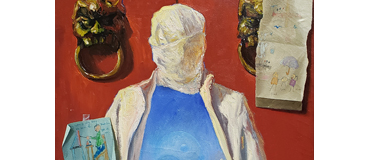
Self-Portrait
A Journey in Space
Allegory
View larger image
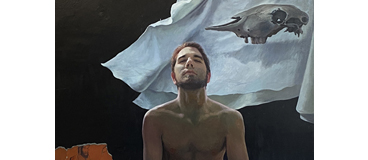
View larger image
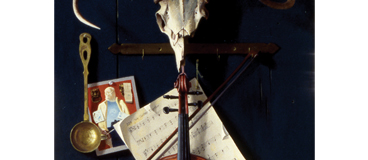
View larger image
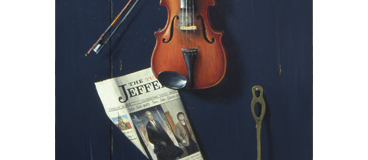
Past and Present
Voice in History
Music Meditation (SOLD)
View larger image
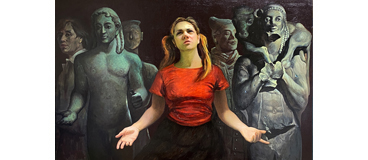
View larger image
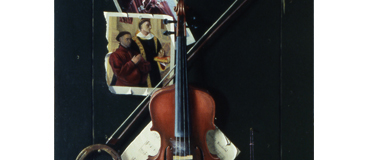
View larger image
Subscribe to our monthly e-Newsletter and stay updated with exhibitions and events!
604 Main Street, Zanesville, OH 43701